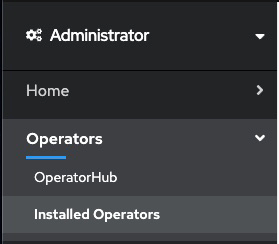Upgrade your installation of Event Streams operator to 2.1.0 and operand to 10.1.0 as follows.
Upgrade paths
The following upgrade paths are available:
- You can upgrade the Event Streams operator to version 2.1.0 directly from versions 2.0.0 and 2.0.1.
- You can upgrade the Event Streams operand to version 10.1.0 directly from version 10.0.0.
- If you have an earlier version than 10.0.0, you must first upgrade your Event Streams version to 10.0.0, before upgrading to 10.1.0.
Prerequisites
If you are upgrading Event Streams in an existing IBM Cloud Pak for Integration deployment, ensure that the IBM Cloud Pak for Integration operator has been upgraded from 2020.2.1 to v2020.3.1. This adds the Event Streams operator version 2.1.0 to the OpenShift Container Platform OperatorHub catalog.
Upgrade process
The upgrade process requires the upgrade of the Event Streams operator, and then the upgrade of your Event Streams instances. Complete the steps in the following sections to upgrade your Event Streams installation.
Upgrade the Event Streams operator to 2.1.0
- Log in to the OpenShift Container Platform web console using your login credentials.
- Expand Operators in the navigation on the left, and click Installed Operators.

- Locate the operator that manages your Event Streams instance in the namespace. It is called Event Streams in the NAME column.
- Click the Event Streams link in the row and then click the Subscription tab. This shows the Subscription Overview for the Event Streams operator.
- Select v2.0 in the Channel section. The Change Subscription Update Channel dialog is displayed, showing the channels that are available to upgrade to.
- Select v2.1 and click the Save button on the Change Subscription Update Channel dialog.
All Event Streams pods that need to be updated as part of the upgrade will be gracefully rolled. Where required ZooKeeper pods will roll one at a time, followed by Kafka brokers rolling one at a time.
Note: The number of containers in each Kafka broker will reduce from 2 to 1 as the TLS-sidecar container will be removed from each broker during the upgrade process.
Upgrade the Event Streams operand (instance) to 10.1.0
- Click Installed Operators from the navigation on the left to show the list of installed operators that includes the upgraded Event Streams operator.
- Select the Event Streams operator from the list of Installed Operators.
- Click the Event Streams tab. This lists the Event Streams operands.
- Find your instance in the Name column and click the link for the instance.

- Click the YAML tab. The Event Streams instance custom resource is shown.
- In the YAML, change the version field from 10.0.0 to 10.1.0.
- Click the Save button.
All Event Streams pods will gracefully roll again.
Verify the upgrade
- Wait for all Event Streams pods to complete the upgrade process. This is indicated by the
Runningstate. - Log in to your Red Hat OpenShift Container Platform as a cluster administrator by using the
ocCLI (oc login). - To retrieve a list of Event Streams instances, run the following command:
oc get eventstreams -n <namespace> - For the instance of Event Streams that you upgraded, check that the status returned by the command in the previous step is
Ready.
Post-upgrade tasks
Upgrade the Kafka broker protocol version
When all previous steps are complete and the cluster’s behavior and performance have been verified, change the inter.broker.protocol.version value in the YAML and set it to 2.6. This will restart the brokers one at a time.
Upgrade to use the Apicurio Registry
If you want to migrate from the deprecated Event Streams schema registry to Apicurio Registry, you will need to move your schemas to the new registry and reconfigure any applications that use those schemas to connect to the new registry, as described in migrating.
